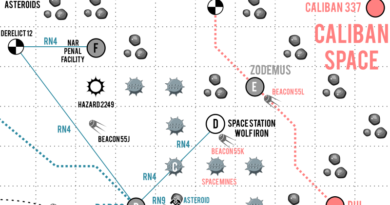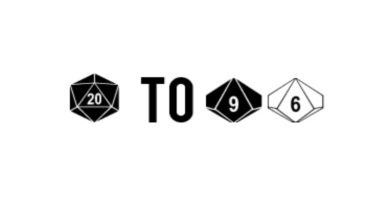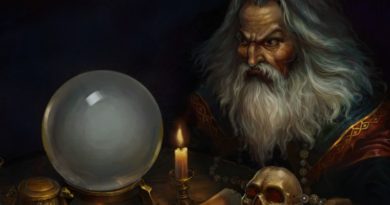Building a More Perfect Class
An improved method for creating new Rules Cyclopedia character classes
In 2001, I wrote Building the Perfect Class to provide a consistent framework for building new D&D classes. The framework broke down each class into discrete abilities, each with a certain XP value; when summed, the total XP value was what you needed to advance. To assign the right XP value to each ability, I reverse engineered each of the Rules Cyclopedia classes, so the resulting framework ensures that new classes are on par with those in the rulebooks.
The original framework did what it was supposed to, but it was possible to “game” the system and create effective classes with very low XP requirements. It’s a munchkin ploy, but it bothered me, so I revisited the material in 2013 with an eye toward fixing this issue. The updated framework is below.
DISCLAIMER: Two items come to mind: First, a lot of people who want to customize classes are referred to Paul Montgomery Crabaugh’s article “Customized Classes” in DRAGON #109 (May, 1986). While Crabaugh’s material is well-suited to tweaking an existing class, his system does not allow you to build new classes that balance against those in the rulebooks. The framework below can be used both to customize existing classes and create new ones. Second, despite my best efforts, the magic-user continues to defy my OCD–I just can’t get his XP values to fit the pattern (though this revision is closer to the mark). All this is to say that while I may have puzzled out a way to assign consistent XP values to each class, this entire exercise is an example of making the facts fit my views, not the other way round; while the framework is solid and works pretty well, it’s not meant to explain or justify how the core classes were created.
UPDATE (9/18/2018): Several helpful readers have pointed out that the values below don’t work for B/X fighters and demi-humans. This is because B/X does not include the Lance Attack, Set Spear vs. Charge, or Fighter Combat Options (RC/104), nor is weapon mastery (RC/75) an option. Since it’s crucial that this tool be capable of generating each class as-written, those who wish to use it for Basic/Expert games need to compensate for these exclusions by using the “B/X” values in the categories outlined below.
Building A Class
Each class is described via 10 categories:
- Hit Dice: the die type used to roll hit points
- Saving Throw: the class’s saving throw table (X24)
- Attack: the class’s “to-hit” progression (X26)
- Armour: the class’s armour choices
- Weapons: the class’s weapon choices
- Spells: the class’s spell-casting ability
- Special Abilities: the class’s special abilities, not based on race
- Skills: the class’s learned skills, not based on race
- Weapon Mastery: the class’s weapon proficiency slots (from the Rules Cyclopedia)
- Level Limit: the class’s experience level ceiling
For each category, pick a value and record the corresponding XP cost. The total XP cost is the base XP required to earn 2nd-level.
Hit Dice
The die type used to roll hit points; assumes that hit points are rolled up to Name Level (9th), after which each level grants a static number of hit points and Constitution bonuses no longer apply.
- d4 = 100XP
- d6 = 200XP
- d8 = 300XP
- d10 = 400XP
- d12 = 500XP
Saving Throw
The class’s saving throw table; this does not account for saving throw bonuses or penalties in special situations.
- Cleric = 300XP
- Dwarf / Halfling = 400XP
- Elf = 200XP
- Fighter = 100XP
- Magic-user / Thief = 150XP
Attack
Demi-humans use the same attack table as Fighters, though I’ve increased the XP value due to their ability to earn attack ranks at higher levels. Note the “B/X Value” for demi-humans and fighters; if you are playing B/X instead of Rules Cyclopedia, use these figures.
- Cleric / Thief = 200XP
- Demi-human = 400XP [B/X Value: 900XP for dwarf or elf; 800XP for halfing]
- Fighter = 300XP [B/X Value: 1200XP]
- Monster = 500XP [B/X Value: 2100XP]
- Magic-user = 100XP
Armour
- Any armour type = 200XP
- No armour allowed = 0XP
- Restricted armour type(s) = 100XP
Weapons
- Any weapon type = 200XP
- No weapons allowed = -100XP
- Restricted weapon type(s) = 0XP
Spells
Fractions apply to the class’s level and indicate equivalent casting ability. For example, “Cleric 1/2” means that at 6th-level, the class casts as a 3rd-level Cleric.
- Cleric = 400XP
- Cleric 1/2 = 200XP
- Cleric 1/3 = 150XP
- Cleric 1/4 = 100XP
- Magic-user = 1,600XP
- Magic-user 1/2 = 800XP
- Magic-user 1/3 = 600XP
- Magic-user 1/4 = 400XP
- No spells = 0XP
Special Abilities
These are “niche” capabilities, learned either as part of class training or inherent to racial type. Special Abilities are useful only in particular circumstances. Each Special Ability is worth 100XP. Examples include:
- Cast Magic Spells in Armour
- Detection (per item: secret doors, slanting passages, new construction, et al.)
- Increased Movement (as mystic)
- Infravision
- Inherent Spell-casting
- Initiative Bonus
- Racial Language (per language)
- Read Spell Scrolls
- Special Attack (per attack: Backstab (as thief), Fighter Combat Options (Multiple Attacks, Smash, Parry, and Disarm; RC/104), Gentle Touch (as mystic), Hand Attacks (as mystic), Lance Attack, Martial Arts (as mystic), Set Spear vs. Charge, circumstantial “to-hit” bonus)
- Special Defence (per defence: Hide (as Halfling), Immunity to ghoul paralysis (as elf), Incremental AC bonus (as mystic), Saving Throw bonus, circumstantial AC bonus)
- Turn Undead
Skills
Skills are learned abilities that can be applied in a variety of circumstances. Each Skill is worth 50XP. Examples include:
- Mystic skills (per skill: Acrobatics, Awareness, Blankout, Heal Self, Mind Block, Resistance)
- Thief skills (per skill: Climb Walls, Find Traps, Hear Noise, Hide in Shadows, Move Silently, Open Locks, Pick Pockets, Remove Traps)
- General Skill (per skill; from the Rules Cyclopedia)
- Read Normal Languages (as thief)
- Speak with Animals (as mystic)
- Speak with Anyone (as mystic)
Weapon Mastery
Weapon Mastery is a proficiency system from the Rules Cyclopedia. If you don’t use Weapon Mastery, use the “B/X Value” figures under Attack, above.
- Fighter (4 initial weapon slots, +1/3 lvls) = 600XP
- Demi-human (Unlimited initial weapon slots, +1/4 lvls) = 200XP
- Non-fighter (2 initial weapon slots, +1/3 lvls) = 0XP
Level Limit
- Advancement to Name Level = -100XP
- Advancement is Unlimited = 0XP
Level Advancement Table
Once your Base XP (bXP) is determined, you can complete the level advancement table as shown below. Use the Experience Point column most appropriate to the class type created:
XP Requirements Level Cleric Fighter Magic-user Thief ----- ------ ------- ---------- ----- 1 bXP x0 bXP x0 bXP x0 bXP x0 2 bXP x1 bXP x1 bXP x1 bXP x1 3 bXP x2 bXP x2 bXP x2 bXP x2 4 bXP x4 bXP x4 bXP x4 bXP x4 5 bXP x8 bXP x8 bXP x8 bXP x8 6 bXP x16 +1K bXP x16 bXP x16 bXP x16 + 0.8K 7 bXP x32 +2K bXP x32 bXP x32 bXP x32 + 1.6K 8 bXP x64 +4K bXP x60 bXP x60 bXP x64 + 3.2K 9 +100,000* +120,000* +150,000* bXP x128 + 6.4K 10 +100,000* +120,000* +150,000* +120,000* 11 +100,000* +120,000* +150,000* +120,000* 12 +100,000* +120,000* +150,000* +120,000* 13 +100,000* +120,000* +150,000* +120,000* 14 +100,000* +120,000* +150,000* +120,000* --------------- * Cumulatively add this figure to the last calculated bXP value. For example, a 12-level cleric-type with a base XP 1,500 is [(bXP x64) + 4K + 400,000] 500,000XP.
Final Words
All the calculations above are in the Building A More Perfect Class spreadsheet. Go to the “Classes” tab appropriate to your game (RC or BX) and start filling in the values for each category using the drop-down menus. When you update all 10 categories, go to the second tab and enter the base XP value to create the Level Advancement Table up to 14th-level (the XP requirement for each level at 15+ is described above).
As always, suggestions and questions are welcome in the comments. If you’re feeling extra social, share your new classes, too–I love to see how others interpret and use this tool.




Very cool, I’ll have to give this a try. 🙂
Erin,
A thought for you would be to add another column and have that be for the maximum spell/prayer levels. Then tweak the partial ones a bit to make the spreadsheet work. I love the article and want you to still fight for Classic D&D. I would be willing to try and help you with it if you want. I have a few other tweaks I thought you might like to consider as well.
Keith
Hi Keith – I’m always interested in improving the material. Can you show me an example of how the max. spell levels column would look, or would this replace the current Spells category?
I was thinking something along the same lines while working on rules for on-the-fly multiclassing. Accounting for maximum spell level might resolve the Magic User vs Elf discrepancy, given that an Elf can’t cast spells higher than 5, but a Magic User can reach level 9 spells.
That’d make “MU to 9” cost 2050xp (!), but “MU to 5” cost 1500xp. This seems like a lot, but level 9 MU spells are incredibly powerful.
I do have a few ideas which could work. If you could get ahold of me via email we could try to look at it that way. I liked the original article and I am impressed that you came back to it and found a way to make it better. I tinkered with the original a little and I am trying to see a way to make my idea work. Thank you for not taking offense as it was not my intent. Just to help improve it a bit.
Keith
One suggestion…I’d change name level limit into two items:
1. Name level with attack ranks: 0xp
2. Name level without attack ranks: -100
and then remove the demi-human fighting class. This will leave existing classes priced the same but make 36 level demi-humans more consistent in prices.
I don’t get exactly what you mean by “inherent spellcasting”. I’d be happy if you could explain it.
Hi Thomas,
Inherent spellcasting would be use of non-memorized spells, either at-will or to a daily limit, like a harpy’s charm, a cyclops’ curse, or a storm giant’s lightning bolt. None of the canonical classes have inherent spellcasting, but it’s noted here for those who want to include it as a class ability (e.g., a bard might cast the equivalent of charm once per day with his sweet lute).
I actually used the older version of this to create a demi-human class with limited thief abilities, limited to 12th level, 1/2 M-U spell progression (using Illusionist spells from 1e/LLAEC), inherent spellcasting without the ability to learn new spells (except by leveling up and rolling randomly) and no scroll use. The Vulpen are a magical race of clever fox folk.
Hi Mason – I like the sound of the Vulpen class, and I’d love to see it. Check out the Submission Guidelines if you’re interested in sharing.
Will do, I just have to copy it over from my notebook. I have a few other classes I’ve designed that I will revise to fit the guidelines as well.
How would you balance this? It seems that there’s a vast difference between charm 1/day and lightning bolt at-will, but both would be 100xp under this system.
This is an area where I’d eye-ball a little to see what felt right. If you are going for absolute balance, you might increment by the total spell levels. Charm (1st level) might be 100xp; lightning bolt (3rd level) might be 300xp.
Another option is a house rule of mine: inherent spells require a “cooldown” based on level. For non-combat spells, 1 day per level; for combat spells, 1 round per level. For example, Charm might be allowed only once per day; lightning bolt would require a 3-round cooldown between uses.
Cool, thank you! I guess it’s more art than science since there’s no actual class that uses such a power that we can compare with.
While I’ve got you… one of the changes from your original Perfect Class doc is that in that system, if you don’t use Weapon Mastery, every class just adds 400xp. Here, if you’re not using WM there’s no difference between a class that would and wouldn’t have it. Wouldn’t this make a class like the Fighter over-valued, XP-wise, if you’re not using WM? Like, I could build a new class called the Fighting Guy who’s exactly like the Fighter in every way except without WM, for 1400xp, yeah? I’m curious as to your thinking behind this change.
Thanks!
Good catch, Nat20. It looks like I included the WM values by default in this version, so you’re right about Fighting Guy. This is me trying to straddle the line between B/X and Rules Cyclopedia, which have identical class XP values, though the RC has more options.
For games that don’t use WM, my recommendation off the top of my head is to use the value that corresponds to your class, and then apply some “weapon proficiency” advantage to compensate for the XP expenditure. For example:
* Fighter: proficient with any weapon – just pick it up and use it
* Demi-human: proficient with 2 weapons per level
* Non-fighter: proficient with 1 weapon per 2 levels
Usually, non-proficiency means a “to-hit” penalty, but that’s tedious (especially at low levels), so I suggest instead reducing damage die by 1 step (e.g., a normal sword does 1d8 damage; wielding it non-proficiently reduces it to 1d6 damage).
Clearly, I need a more permanent solution… lemme noodle on that for a bit and see what I can come up with.
I’m definitely coming from a B/X position rather than an RC one, and it seems to me that via weapon mastery, the RC was trying to balance the old fighter/caster divide a bit. I find it a pretty headache-inducing system, though. 🙂
I want to say that the B/X fighter is probably a little weak in the long run, since it’s hard to justify 2000 xp as a starting point, but then again the M-U is absolutely terrible to start out with. I’m sure it’s not a coincidence that so many B/X-based retroclones (ACKS and Lamentations come to mind) give more to the fighter.
I look forward to seeing what you come up with! I hope it’s clear that I find the work you’ve done extremely interesting and useful. 🙂
I am going off your original article.
I based spellcasting on maximum castable spell level.
I took M-U full casting up to 2400XP.
I assumed a base cost for M-U spellcasting of 375 XP (for “0 level”, the ability to use cantrips, if used, and to cast spells from scrolls, use staves and wands, etc.)
I then added 225XP for each castable level up to a max of 9th level. For instance, the Elf maxes out at 5th level so an Elf’s XP total for full casting is 1500 (ie 375 + (225 x 5) = 1500). This makes your original calcs work.
I then used the same logic with “partial casters”. They each have a base of 375 xp, plus a certain amount per castable spell level:
full M-U = 375 xp + 225 xp per spell level
1/2 M-U = 375 xp + 115 xp per spell level
1/3 M-U = 375 xp + 75 xp per spell level
1/4 M-U = 375 xp + 60 xp per spell level
I applied similar logic to clerical spell casting, but with a base of 150 xp:
full cleric = 150 xp + 50 xp per level
1/2 cleric = 150 xp + 25 xp per spell level
1/3 cleric = 150 xp + 15 xp per spell level
1/4 cleric = 150 xp + 10 xp per spell level
I think it works out pretty well, and it aligns with the RC values now, for all classes.
I have an app I created to handle the calcs (asked you for permission to share a few years ago…). Email me if you want an updated version.
This is all very interesting!
I want to build a Gnome race-as-class that makes them essentially Thief/Illusionists… I will try this for sure.
Very interesting!
Hi Bear,
Glad you like it, and I hope it suits your purposes. As a side note, we’ll be releasing a more streamlined version of this tool specifically for use with Gavin Norman’s Old-School Essentials line in the very (very) near future.
In the meantime, I’m happy to answer any questions and would love to see your gnome class – feel free to post here if you like!
Thanks,
-Erin
Looks like I remembered my WordPress login, lol.
So you have a version coming for OSE? This pleases me tremendously as that is the B/X version I will be using.
How soon is “very (very) near”? I will happily wait for that 🙂
Cheers!
– Bear
I did want to ask another question, specifically referring to special abilities…
It seems that the rules for those are super vague and I was hoping you (or someone else) might have a more solid guideline for how to make them and price them in XP?
Cheers!
– Bear
Yeah – admittedly, there is some jiggery-pokery with special abilities. They’re easier to figure out with the aid of the spreadsheet, but they’re not 100% consistent (which I credit to trying to make this system work for both B/X *and* BECMI).
I hate to sound coy, but this is firmly addressed in the upcoming OSE version, which will be available very, very (very) soon indeed.
That would be telling…
Very well then.
I will wait. The new campaign is about a month away really, so I have time lol.
But I’m watching you sir! 😉
Hmmm… Now I feel I’ve built it up… 😉
Necrotic Gnome says the preview he saw looks great so I can’t wait!
I’ve been building my own over the past few days haha – now I see you’re revamping this for an OSE-specific version? Do tell… How did you address the Fighter issue? (seems really difficult to get them to add up in B/X especially vs Dwarf and Halfling)
How about getting on a playtesting list? Review list? Help you with the heavy lifting list? Hell I’ll do a YouTube review!?!?!?!?
🙂
Since your idea of a gnome thief-illusionist sounded cool, I created one.
In so doing, I noticed an issue with the XP charts:
When one assembles the unique race/spells/abilities combination to yield a brand new class, and that class is a demi-human, it is unclear as to which XP Progression to use — i.e., that of the Cleric, or Fighter, or Magic–user, or Thief. The answer, I think I discovered, is that NONE of these are the correct progression for a demi-human, even if it’s a gnome who can cast a limited number and range of magical spells. I believe, that if the gnome is treated as a halfling (as recommended by the RC, see Appendix), then the gnome adopts most Halfling special magic resistances and so forth, so after 8th-level, I believe he should advance like a Halfling. For levels 1–7, the gnome should advance according to Smale’s XP Progression system. The numerical value (XP required) to reach level 2 should be as per the cumulative total of whatever thief-like abilities and magic spells you give the gnome, plus other info like HD, atk progression, weapons used, etc.
The problem with using, say a Fighter XP Progression for a gnome thief-illusionist that has attack ranks post-level 8, is the results won’t match up well with similar, existing demi-humans like Halflings. In other words it’s possible the Fighter (or Magic-user) progression could yield experience point values far higher than what they should be.
It would be interesting, to see an analysis of DEMI-HUMAN (Dwarf, Elf,, Halfling) XP Advancement and Progression beyond Name level.
In my case, I just used Smale’s system to make the class, applying XP progression to level 7 or level 8, and followed the Halfling XP progression chart, for each and every “level” thereafter. This has the effect of making the gnome thief-illusionist take longer to gain levels than existing fighters and halflings — which it should, since he fights like a halfling but can also do some thief stuff AND cast illusions — but only up to Level 8 . . . Then, he advances like halflings.
How about getting on a playtesting list? Review list? Help you with the heavy lifting list? Hell I’ll do a YouTube review!?!?!?!?
🙂
Matt,
You can make it work if you account for class restrictions – i.e., disadvantages that reduce XP cost. The details are a lot to get into here, but things like size, weapon / armour restrictions, level limits, and when the class can build a stronghold all factor in.
Was the OSE version released? Very interested in this.
Hi Amjeerih,
Apologies for the delay, but the OSE of the BX Options: Class Builder is on DTRPG. It’s available in PDF and POD versions.
Note that this version is specifically optimized for B/X and OSE. It will not work for RC classes.
Also, what’s the 1 special for Magic-Users RC as originally defined? We can’t figure that out.
Hi Adam,
It looks like the special for RC magic-users is Read Spell Scrolls.
This is different from how the class was reverse-engineered in the original Building the Perfect Class article. Make sure you use the updated spreadsheet linked above.
Thanks. Btw, we have our family playing Rules Cyclopedia edition, so this was extremely valuable and I would hope with the B/X edition moved over to OSR, that maaayyyybe the rest of us don’t get forgotten 🙂
How does a Dwarf have 8 Special Abilities?
Lance Attack
Set Spear
Fighter Combat options
Half damage from spells at 1400000xp
Infravision
Language, Dwarf
Language, Gnome
Language, Goblin
Language, Kobold
Detecting stuff
That comes to ten, since each racial language is to count per language.
But are Fighter Options one ability or four abilities? Since Multiple Attacks is listed as a separate Ability, and the Dwarf gets that, does that mean there are at least eleven abilities, not eight?
Hi Bryan – Apologies for the late response – your comment notification was in my spam folder.
First question regarding clerics having 2 special abilities: These are Turn Undead and Cast spells from a scroll.
Second question regarding Dwarf special abilities: If you’re using BX, Dwarfs have 5 special abilities (Detection, Infravision, 3 racial languages). If you’re using RC, Dwarfs have the 5 above, plus Fighter combat options, lance attack, and set spear vs. charge.
I did not count Dwarf language or half-damage.
Noticed that the XP values determined for the mystic class on page are actually off, making the class CHEAPER than it’s official base XP value by 400.
How could/would this work for 0E classes? Specifically for Swords and Wizardy Complete (revised – not sure that matters though)?